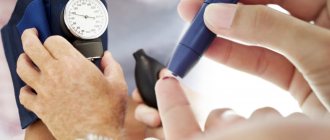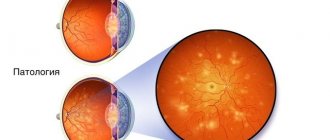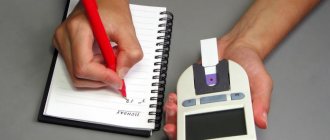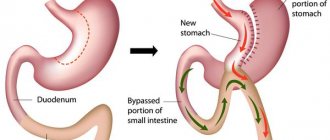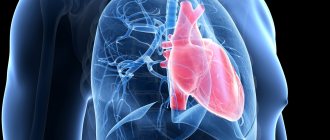Almost 20% of Russians have elevated blood glucose levels. However, it is not high enough to meet the criteria for diabetes. This condition is called prediabetes. It is characteristic of a complex of metabolic disorders - metabolic syndrome. It often causes excess weight to accumulate around the waist, as well as increased blood cholesterol and blood pressure levels. The endocrinologist at our medical center provides recommendations that will help you cope with this condition.
The development of these disorders is based on insulin resistance - a condition accompanied by the development of immunity in the body's cells to insulin, which is produced by the pancreas. But this condition is reversible, since its main risk factors are a sedentary lifestyle and excess fat intake.
By changing your lifestyle, in particular by increasing physical activity and starting to follow the principles of a healthy diet, you can have a beneficial effect on carbohydrate and fat metabolism, and subsequently lower the level of glucose and “bad” cholesterol in the blood. For example, there are a number of foods that help lower blood sugar. So what foods lower blood sugar? This will be discussed further.
Difficulties in treating type 2 diabetes mellitus
A huge number of people in the world suffer from type 2 diabetes. It is surprising that many doctors prescribe drug treatment for this disease. A huge number of studies have been conducted that have proven the effectiveness of non-drug therapy for this disease (this is all scientifically and officially confirmed). Everyone knows about this, but some endocrinologists continue to prescribe medications to patients. The problem is that at first the doctor prescribes non-insulin drugs, and some experts even recommend insulin drugs. Unfortunately, doctors' thinking is directed towards prescribing drugs; they cannot prescribe anything else. This is some kind of psychological cliché. It is easier for a doctor to prescribe a drug rather than something else, although it helps much better than injections and pills. For most endocrinologists, drug-free diabetes treatment is a priority.
Not by diet alone
Doctors also prescribe a diet for type 2 diabetes, which is very good. But there is also a certain imbalance here: between the psychology of the doctor and the psychology of the patient. The doctor thinks: the person came to me for treatment, so I will prescribe him medications and a diet so that he does not eat carbohydrates and sweets (he will advise adding fat to his diet). Based on this, the doctor prescribes Metformin and diet.
The patient thinks differently: he comes to the doctor, who prescribes medication and recommends dieting, walking more, and maintaining a sleep-wake schedule. Patients have heard about the pills, and information about maintaining a proper diet and life is not relevant for them. After the appointment, the person goes to the pharmacy, purchases medications and is satisfied that the first point of medical prescription has been completed. The patient is confident that he will follow other medical recommendations. Then I took the pill, and everything else will happen tomorrow: diet, sleep and wakefulness, as well as walks in the fresh air. Important: most patients do not realize that treating diabetes without medications is possible, and it is so important to lead a healthy lifestyle and adhere to the diet prescribed by the doctor.
Treatment of diabetes with herbs
Medicinal herbs are in demand in the fight against diabetes. Herbal medicine allows you to normalize glucose concentrations, improve metabolism and protect the body from the development of complications. The use of herbs is allowed only under the supervision of a physician. Some of the plants are incompatible with each other. If you were unable to find an experienced herbalist, then it is better to prefer ready-made preparations or strictly follow the recipe.
Blueberry infusion
Blueberry leaf has high hypoglycemic properties. Therefore, it is often used to treat diabetes. An infusion from this plant normalizes the functioning of the digestive tract and improves the functioning of the pancreas. Preparation:
- Blueberry leaves (1 tbsp) are poured with a glass of boiling water.
- The container is covered with a lid and wrapped in a woolen scarf.
- Infuse the drink for 30-40 minutes.
- Strain.
Drink the infusion three times a day, one tablespoon at a time. The duration of treatment varies from 7 to 14 days. Doctors recommend eating blueberries. They strengthen the capillaries located in the retina and also help prevent retinopathy, an irreversible complication of diabetes.
Infusion of meadow clover
Red clover is successfully used to protect against colds and viral diseases. It lowers blood sugar, cleanses toxins, and has a diuretic effect. Clover enhances tissue regeneration (healing), which is especially important for diabetics. The plant activates the removal of harmful cholesterol. Preparation:
- Dry grass (2 tablespoons) is poured with boiling water (300 ml).
- The infusion is poured into a thermos and sealed tightly.
- Infuse the drink for 2-3 hours.
- The infusion is filtered.
Take 0.5 cups three times a day before meals. Treatment lasts 1 month. Then they take a break for 30 days and resume herbal medicine.
Oat infusion
Oat grains contain many vitamins and minerals. In addition to them, the cereal contains inulin, which can normalize glucose concentration. The benefits of unpeeled oat grains have been recognized by official medicine. Therefore, cereals are often included in the diet of people with diabetes. Preparation:
- A glass of unpeeled oats is filled with 1 liter of water.
- The contents are poured into the jar and mixed thoroughly.
- The container is closed with a lid.
- The jar is left for 1 day in a dark place.
- Then the drink is filtered.
Drink the infusion 3 times a day, 0.5 cups before meals. Oatmeal treatment lasts 2 weeks.
Burdock decoction
Burdock normalizes carbohydrate metabolism. The plant accelerates the body's absorption of glucose. Burdock decoction quickly and effectively reduces sugar concentration. This drink can help with hyperglycemia. In the early stages of diabetes mellitus, this remedy is not recommended. Preparation:
- Burdock root is thoroughly cleaned of dirt and washed.
- The raw materials are cut into small pieces.
- Chopped root (1 tbsp) is poured with water (0.5 l).
- The mixture is boiled over low heat for half an hour.
- After cooling, filter the finished broth.
Take the medicine a quarter glass three times a day for 2 weeks.
Herbal collection
For diabetes mellitus, a medicinal mixture containing several medicinal herbs will benefit. It will help normalize the functioning of internal organs and reduce glucose concentrations. Preparation:
- Combine crushed alder leaves (half a glass), the above-ground part of nettle (1 tbsp.), and quinoa (2 tbsp.).
- The herbal mixture is thoroughly mixed.
- The collection is poured into a glass of warm water.
- Leave the product in the light for 4-5 days.
- Strain.
- Add a pinch of salt to the drink.
Take the infusion 1 tsp. on an empty stomach 2 times a day. The course of treatment is 2 weeks.
Serious complications
This approach to the disease (not only from doctors, but also from patients) ruins a huge number of lives. The fact is that type 2 diabetes , without proper treatment, leads to very serious complications, these are:
- eye diseases;
- kidney and pancreatic diseases;
- brain pathologies;
- enlarged thyroid gland;
- atherosclerosis;
- nephropathy;
- angiopathy (vascular pathologies).
Important: people die from complications of diabetes!
A person may lose consciousness from a sharp drop or increase in blood glucose levels (hypoglycemic or hyperglycemic coma). This most often happens when a patient is prescribed insulin, but he does not know how to correctly calculate the dose. In such a situation, the patient needs medical assistance on an emergency basis (life is literally counted for minutes).
Features of non-drug therapy for type 2 diabetes
Many endocrinologists have extensive experience (many years) in treating patients with type 2 diabetes, including those who have been switched to insulin. They stop taking not only insulin, but also other medications. You will be surprised, but their diabetes goes away. It can be treated without medication and has been proven by science (international clinical studies).
First, glucose is utilized by muscles. Muscle glycogen stores (a polymer of glucose) are depleted during anaerobic exercise. Doctors recommend that patients with diabetes walk at least 2 hours a day.
The second is proper nutrition. Limit your intake of fast carbohydrates, these include sweets, honey, fruits, pies, cakes, buns, pastries. Slow carbohydrates should also be avoided. This is rice, pasta, potatoes, buckwheat, bread. These products should be minimized. Fats should be added to the diet, not only vegetable, but also animal. It is important that the body can take energy for life.
First of all, it is necessary that the body is not loaded with glucose, which comes from food.
A well-known endocrinologist said that a patient who suffers from type 2 diabetes mellitus and eats sugary foods is like shooting himself in the head with a loaded revolver and hoping that it will misfire. Foolish hopes.
Diabetes mellitus is a metabolic pathology. The disease goes away if the metabolism is radically restructured. This can be done thanks to an active lifestyle (movement), proper nutrition, and the third factor is the regulation of the liver and pancreas (it is carried out from the brain, from the hypothalamus).
The hypothalamus receives its nutrition from the vertebral arteries (approximately 40%). If a patient has osteochondrosis (a stiff neck), then the function of this part of the brain will decline. The hypothalamus, through activation of the pituitary gland, causes the liver and pancreas, as well as the thyroid gland, to work more actively. It first activates the thyroid gland, which affects the functioning of the liver and pancreas. This is why the thyroid gland suffers greatly in diabetics.
It is necessary to regularly do gymnastics for the cervical spine: if the blood flow to the hypothalamus improves, then you can directly influence the functioning of the liver and pancreas.
Treatment of diabetes without drugs includes the following points:
- lead an active lifestyle (walk daily, at least two hours a day);
- follow a special diet (limit not only fast, but also slow carbohydrates; fats should predominate in the diet);
- activate the hypothalamus using special exercises for the cervical spine.
The effectiveness of these three points has been scientifically proven, many specialists know about this, but it is easier for them to prescribe medications.
If a person has cervical osteochondrosis, it is necessary to perform special gymnastics daily. For this pathology, medications are also not effective.
If a person who suffers from type 2 diabetes mellitus follows the above recommendations on a daily basis, then within a month you can say goodbye to this pathology.
You will not need any medications, no matter what stage of type 2 diabetes you have, whether you have been prescribed insulin or not.
Important: the above recommendations should be followed throughout your life! If the patient follows these instructions for a month and then returns to his usual lifestyle, his blood sugar level will increase.
Some patients complain that the doctor did not prescribe medications. They believe that the therapy was prescribed incorrectly. This opinion is fundamentally wrong, because medications are an additional burden on the body, and they have a huge number of contraindications and side effects. Proper nutrition, physical activity and exercises for the cervical spine are three steps to recovery from type 2 diabetes.
How can dietary changes help prevent diabetes?
When it comes to preventing diabetes, many people think about the need to almost completely limit carbohydrates in their diet. And at first glance, this looks quite logical - after all, it is carbohydrates that increase blood sugar levels. But still there is no need to rush into this. Firstly, carbohydrates are different, and secondly, they perform many useful functions in our body. You just need to understand what carbohydrates you can afford and at what time.
Carbohydrates differ from each other in the rate of absorption, that is, in the time they enter the blood. Therefore, they can be divided into “fast”, “medium” and “long” carbohydrates. “Fast” include foods and drinks to which sugar is added, including products that contain “natural sugars” (fructose) - honey, fruit juices, concentrates. They appear in the blood literally a few minutes after their consumption, sharply increasing blood sugar levels. These carbohydrates have the highest glycemic index*. “Medium” include : bread, cereals, pasta, potatoes, beets, carrots, corn. This kind of carbohydrates is absorbed much more slowly, and accordingly, glucose in the blood will also increase more slowly. But, if they are subjected to prolonged cooking, their absorption will be significantly accelerated. “Long” carbohydrates contain a large amount of plant fiber: tomatoes, cucumbers, zucchini, eggplant, cabbage, lettuce, and, of course, greens. And they are the most difficult for the body to process, so the sugar level will rise very slowly and evenly. Long carbohydrates have the lowest glycemic index.
*The glycemic index is a relative indicator that reflects the rate at which blood sugar levels rise after digesting certain foods.
Signs
With type 2 diabetes mellitus, the following symptoms develop:
- cramps in the calves;
- constant weakness;
- frequent urination;
- decreased vision (sugar accumulates in the blood, which leads to swelling of the lens);
- itching of the skin, dry skin, and pustular infections;
- a constant feeling of thirst (it does not stop with the consumption of liquid, some patients drink 5 liters of liquid per day);
- insomnia;
- protracted infectious pathologies;
- dizziness;
- reduced performance;
- increased appetite;
- increased fatigue;
- muscle weakness;
- foot pain;
- irritability;
- itching in the genital area;
- a drop in body temperature below average;
- decreased potency, sexual activity;
- obesity or rapid weight loss;
- wounds that do not heal over a long period of time.
I would like to draw your attention to the fact that very often type 2 diabetes mellitus is asymptomatic. To prevent this, you should adhere to a healthy lifestyle and do not forget about regular medical examinations (this should be done once a year).
If you are concerned about at least one of the symptoms described above, you should immediately contact an experienced endocrinologist. It is no secret that most doctors prescribe medications, but type 2 diabetes is easy to cure without medications. The doctor is obliged to inform about the need for a correct and active lifestyle, and tell the patient about what diet to follow.
Traditional medicine recipes
Diabetes mellitus has been known since ancient times. In an era when pharmacological drugs had not even been heard of, healers fought the “sweet disease” with folk remedies. Many recipes, useless or unproductive, have been eliminated over the years. And the most effective remedies were preserved by traditional healers and have survived to this day. Among these recipes, the following are popular.
Decoction of aspen bark
The medicinal decoction normalizes blood sugar. The drink can completely eliminate non-insulin-dependent (type 2) diabetes mellitus if the pathology is detected at the initial stage (prediabetes). Preparation:
- A handful of aspen bark is finely chopped.
- The raw materials are poured with 3 liters of water.
- The container with the workpiece is placed on the fire and brought to a boil.
- As soon as the broth begins to boil, turn off the fire immediately.
- Cover the drink with a lid and leave for 2-3 hours.
- The broth is filtered.
Drink the drink without additives instead of tea. The daily norm is 1 liter, 1.5 liters are possible. Take the decoction for 7 days. Then take a break for 10 days. The weekly treatment is repeated again.
Bay leaf decoction
This remedy can be successfully used for both types 1 and 2 diabetes mellitus. Bay leaf has high hypoglycemic (sugar-lowering) properties. The decoction strengthens the immune system and normalizes metabolic processes. Preparation:
- Bay leaves (15 pcs.) are poured with 0.3 liters of water.
- Boil the mixture over low heat for 15 minutes.
- Then the resulting drink is poured (along with the leaves) into a thermos.
- Infuse the decoction for 4 hours.
- Strain.
It is recommended to take the medicine 3 times a day, approximately an hour before meals, 3 tbsp.
l. The course of treatment is 7-10 days. After a 10-day break, you can repeat the therapy again. A decoction of bay leaves greatly reduces glucose levels. Therefore, it is prohibited to use it without a doctor’s permission. The drink is contraindicated for pregnant women, small children and nursing mothers.
Acorn powder
Some treatments are surprising. So, the recommendation to eat acorns seems strange to the uninitiated. Meanwhile, oak nuts are able to fight infections, viruses, and reduce sugar. They normalize digestion, improve the functioning of the heart and kidneys. Thus, acorns resist the development of complications of diabetes. Preparation:
- Place fresh acorns on a dry baking sheet and dry in the oven (at a temperature of 80 ° C) for 5 minutes.
- Continue drying with the oven door open for 1 hour. At the same time, the raw materials are regularly turned over.
- Then wait until the oak nuts cool down.
- The acorns are peeled.
- The dried raw materials are ground into powder.
Take the medicinal drug (1 tsp) on an empty stomach, in the morning, half an hour before breakfast. Repeat the dose (1 tsp) in the evening, an hour after dinner. Duration of therapy – 1 week. Then a break of 7 days, after which the treatment can be repeated.
Infusion of bean leaves
For diabetes mellitus (especially type 1), traditional healers advise using an infusion of bean leaves. The raw material contains protein components that enhance insulin production. Preparation:
- The infusion is prepared in the evening.
- Dry flaps are crushed.
- The resulting powder (1.5 tbsp) is poured with boiling water (1 tbsp).
- The container with the future medicine is wrapped in a warm towel and left to infuse overnight.
- In the morning, the drink is filtered.
Use the product before breakfast on an empty stomach, 0.5 cups. Duration of therapy is 7-10 days. Treatment can be repeated after 10-12 days of interruption.
Flaxseed decoction
Many folk recipes include flaxseed. The component is very popular among healers because it is rich in minerals and vitamins. Small grains can restore metabolic processes, improve pancreatic function, and normalize glucose concentrations. The decoction is useful for types 1 and 2 diabetes. Preparation:
- Pour 5 tbsp into the container. water.
- Pour 5 tbsp into the liquid. l. Flaxseed.
- Boil the mixture for 15 minutes.
- Then the broth is infused for 2 hours.
- Strain.
You need to take the drink 2 times a day, 50 ml before meals.
Treatment lasts 7-10 days. Flaxseed can be harmful to health. Therefore, before using the decoction, you should consult a doctor. This medicine can cause severe complications in women suffering from endometriosis, polycystic disease, and fibroids. The decoction is contraindicated for pregnant women, nursing mothers and men with prostate adenoma.
Causes
Genetic predisposition to type 2 diabetes plays a big role. Therefore, if one of your relatives suffered from this pathology: you should eat properly (exclude sweets from the diet), lead an active lifestyle, and also undergo regular examinations. Experts identify the following causes of the disease:
- constant stress;
- sedentary lifestyle;
- bad ecology;
- fast food (the diet should contain large quantities of vegetables and fruits);
- excess body weight;
- age (as patients age, insulin resistance decreases);
- gestational diabetes in the past;
- high pressure;
- taking certain medications (especially without a doctor’s prescription);
- history of strokes and/or heart attacks;
- ethnicity;
- lack of physical activity;
- unhealthy diet (including consumption of drinks containing high sugar content).
Endocrinologists focus on the fact that in the last few years the number of patients who have been diagnosed with type 2 diabetes has increased several times. The reason for this is banal: non-compliance with simple but effective rules.
Propolis for diabetes insipidus
Sometimes patients are diagnosed with diabetes insipidus. To treat such a disease, you can use an effective propolis tincture. Preparation:
- Fresh propolis (the size of a walnut) is crushed.
- The raw materials are poured with 100 ml of alcohol (70%).
- Cover the container with a lid and transfer it to a dark place.
- Keep the tincture for 2 weeks, remembering to shake daily.
- Store the drug in the refrigerator.
Take the product daily, 15-18 drops, 20 minutes before meals, three times a day. The tincture can be diluted in water or milk. The course of therapy is 4 weeks.
Prevention measures
In order to prevent the development of type 2 diabetes mellitus, great efforts from the patient are not required. It is necessary to monitor your weight and move more to avoid obesity.
If one of your relatives suffered from type 2 diabetes, you need to monitor the condition of your pancreas and undergo regular medical examinations (take a blood test to check your blood glucose levels once a year).
Pathologies of the pancreas and/or hormonal system should be treated promptly.
It is important to remember that type 2 diabetes is not a death sentence! But the patient must follow all the specialist’s recommendations. This will avoid serious complications.
Physiotherapy
If you have diabetes, exercise is essential. Gymnastics protects against the development of obesity and normalizes the condition of internal organs. Physical activity requires energy, so excess glucose begins to be actively absorbed by the muscles. This helps reduce sugar. Each exercise is repeated 10-15 times. Be sure to monitor your well-being. Take breaks regularly. Gymnastics should not cause fatigue. Excessive activity will cause your blood sugar to spike.
Approximate complex
At home you can perform the following gymnastics:
- Standing on the floor. They walk in place. At the same time, raise your legs high, bending your knees. Walk for 3-4 minutes.
- Standing. Take a step back while inhaling with your right leg and raise your right arm up. As you exhale, return to the starting position. Repeat the exercise for the left limbs.
- Standing. Arms extended forward. Take turns swinging with your feet, trying to reach your palm with your toe.
- Squats. Hands along the body. While inhaling, the upper limbs describe a semicircle in the air. Palms touch above the head. As you exhale, lower your arms down along the same trajectory and squat. As you inhale, you rise again.
- Tilts. Hands on the belt. While bending forward, turn the body so that the elbow of the left hand reaches the toe of the right foot. Repeat the bends with twists in both directions.
Older people can start this complex with 4-5 repetitions. Gymnastics should be done daily. And gradually you need to increase momentum. Nature has given man many healing products, plants, and spices. And if you use these remedies correctly, you can resist even such a formidable disease as diabetes.


